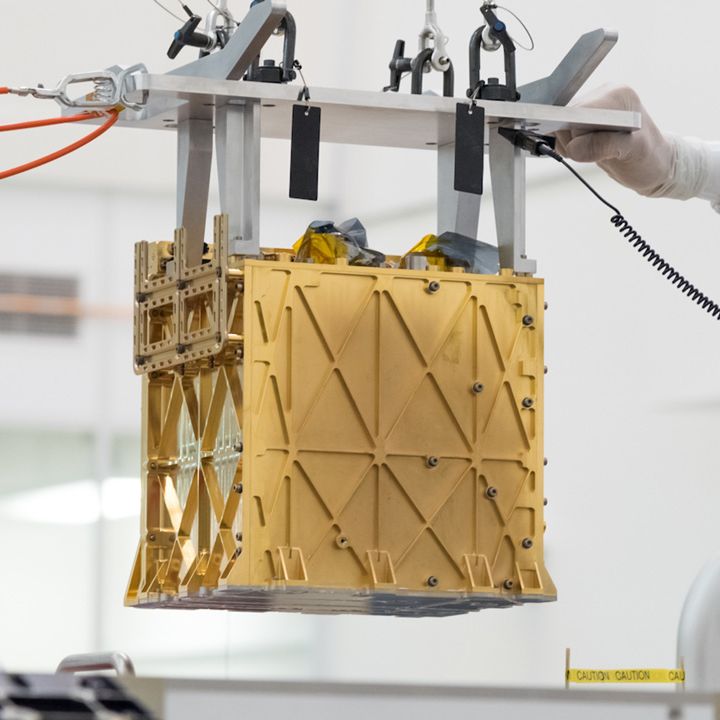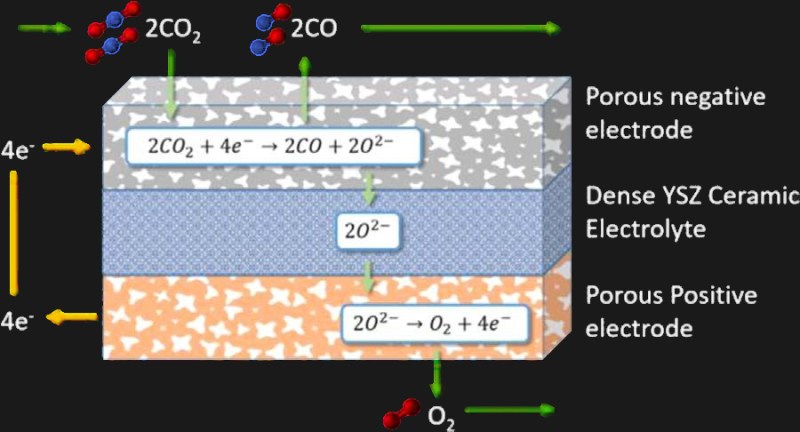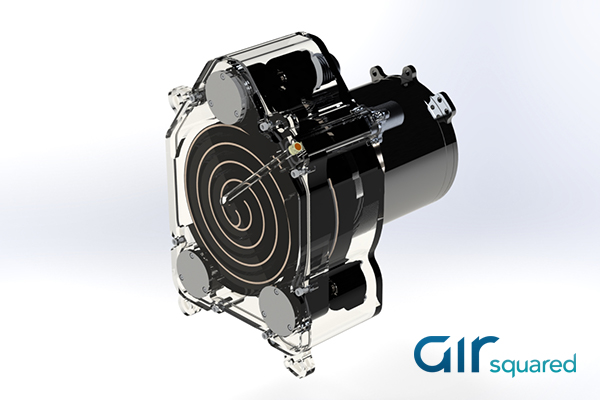The rule of thumb with planetary exploration so far has been, “What goes up, stays up.” With the exception of the Moon and a precious few sample return missions to asteroids and comets, once a spacecraft heads out, it’s never seen again, either permanently plying the void of interplanetary or interstellar space, or living out eternity on the surface of some planet, whether as a monument to the successful mission that got it there or the twisted wreckage of a good attempt.
At the risk of jinxing things, all signs point to us getting the trip to Mars reduced to practice, which makes a crewed mission to Mars something that can start turning from a dream to a plan. But despite what some hardcore Martian-wannabees say, pretty much everyone who goes to Mars is going to want to at least have the option of returning, and the logistical problems with that are legion. Chief among them will be the need for propellants to make the return trip. Lugging them from Earth would be difficult, to say the least, but if an instrument the size of a car battery that hitched a ride to Mars on Perseverance has anything to say about it, future astronauts might just be making their own propellants, literally pulling them out of thin air.
Living Off the Land

Even with the resource constraints placed on the Perseverance rover’s design by the full suite of science experiments planned for the mission — the sample caching system alone requires two dedicated robots and occupies almost all of the belly of the beast — JPL designers and scientists still found a way to squeeze two technology demonstrations into the rover. This is not without precedent; the Sojourner rover included on the Mars Pathfinder mission in 1997 was a proof-of-concept design that led directly to the remarkably successful Spirit and Opportunity rovers and eventually to Curiosity and Perseverance. Pathfinder also demonstrated the feasibility of using airbags to land payloads on Mars; while not useful for big payloads, we expect to see landings use the method again in the future.
While the Ingenuity helicopter seems to have captured the lion’s share of the general public’s attention, the Mars 2020 technology demonstration we find most interesting is the Mars Oxygen ISRU Experiment, or MOXIE. It’s not often you encounter nested acronyms, but that only serves to illustrate the complexity of the experiment. ISRU stands for “in situ resource utilization,” and refers to the extraction and use of materials found in space or planetary environments. Rather than shipping raw materials all the way from Earth to space, ISRU seeks to exploit what’s already out there. Other than stretching the definition to include harvesting solar energy with photovoltaics, we’ve done very little in the way of ISRU so far; NASA recognizes the need to change this model, and MOXIE is very much a step in this direction.
The Secret’s In the Ceramics
If an alien space probe were to come to Earth, it wouldn’t face much of a challenge to extract oxygen from the environment. Our atmosphere is roughly 21% oxygen, which makes it easily separable from the air. It’s also abundant in the water that covers our planet, and separating oxygen and hydrogen from water is easily accomplished with electrolysis.
Mars, however, is nowhere near as blessed with water as Earth. We’ve yet to find significant reserves of liquid water there, and while there may be enough water there to create an ocean that could cover the entire planet, most of it is locked away in the north polar ice caps and other frozen reserves that are out of reach. Recovering sufficient water for electrolysis would be energetically difficult. There is, however, an essentially unlimited source of oxygen on Mars: its atmosphere. While there’s only a trace of oxygen, 95% of the thin air is carbon dioxide. MOXIE is designed to extract oxygen from this abundant local resource, using something called solid oxide electrolysis.

Like the electrolysis of liquid water, solid oxide electrolysis relies on electricity to break a molecule down into its component elements. But there’s much more to it, and it all revolves around the special characteristics of the ceramic materials at the heart of the machine. Certain ceramics — in the solid oxide electrolyzer (SOXE) cells inside MOXIE, the material is zirconium oxide stabilized with a small amount of scandium, and is known as ScSZ — behave like electrical conductors for oxide ions, which are just basically oxygen molecules with a couple of electrons stripped away. That property (along with other general properties of ceramics like heat resistance, high strength, lightweight, and workability) makes ScSZ the perfect material for solid oxide electrolysis.

The oxygen-production cycle in MOXIE starts with a simple air compressor and some dust filters. Rather than a more traditional piston compressor or a diaphragm pump, MOXIE includes a scroll-type compressor, where two scroll-shaped elements are nested together. One, the stator, remains fixed, while the rotor element revolves in a tight orbit within the stator without rotating on its axis. This creates a narrowing space between the two elements that forces gas from the perimeter of the compressor body to the center. Scroll compressors have a lot of advantages for applications like this, with oil-free operation being chief among them. MOXIE’s scroll compressor (and the BLDC motor that powers it) is its only moving part, and is capable of boosting the pressure of the thin Martian atmosphere to about the same pressure as the Earth’s atmosphere — about a 100-fold increase.
Since solid oxide electrolysis requires high temperatures — on the order of 800°C — the compressed process gas is next passed over a series of 3D-printed heat exchangers. A large part of MOXIE’s power budget goes into heating the gas; MOXIE is so power-hungry that a single 2- to 4-hour cycle requires more power than the rover’s radioisotope thermoelectric generator (RTG) produces in a single sol. This means MOXIE uses must be scheduled carefully, as nothing else on the rover can be drawing a significant amount of power.
Act Like a Tree
The heated process gas, which is about 98% carbon dioxide, then enters a stack of SOXE cells. Each cell is a sandwich of porous metal electrodes on each side of a thin piece of ScSZ acting as a solid-phase electrolyte. A current is applied across the cell as gas infiltrates the cathode; there, a combination of thermal decomposition and the catalytic action of the metal causes the following reduction reaction:
The oxide ions (2O2-) are ionically attracted to the ScSZ electrolyte. They are pulled away from the carbon monoxide waste product and unreacted process gas left in the porous cathode and into the electrolyte, where they then hit the boundary with the anode. The positive charge of the porous anode causes the oxide ions to be oxidized:
Sensors will monitor the electrolysis process and test the oxygen the SOXE stack produces for purity and flow rate, which is expected to be up to 12 g/hr using the maximum current of 4 Amps. Once the analysis is complete, all gasses are vented into the atmosphere — there’s no sense in saving it, at least not yet, since MOXIE is only a proof-of-concept. Scaled up approximately 200 fold, though, a mega-MOXIE could potentially produce and store the estimated 30 metric tons of oxygen needed to put a Mars ascent vehicle into orbit for a trip home. Sending that much liquid oxygen from Earth would mean lifting at least 10 times that mass, meaning MOXIE might someday save four or five heavy-lift launches to Mars.
The chemistry of MOXIE is pretty simple, but as always, there are complications and practical considerations, particularly with unwanted reactions clogging the porous cathode with metal oxides or even solid carbon. But perhaps the biggest practical consideration is that, like the mission’s entry descent and landing (EDL) phase and much of the terrain navigation the Perseverance rover will do, MOXIE will have to run its experiments autonomously. If something goes wrong, there won’t be anyone to push a button or purge a line. Like the astronauts who will depend on MOXIE’s someday big brother to get them home, the experiment is on its own, and will have to get its job done no matter what Mars throws at it.
















I hope at some point we actually try to restore the martian atmosphere. There is plenty of material just waiting on Venus that we could compact into a frozen ball and shoot to where Mars will be. It would be the three pointer of the century but it seems like a good way to start terraforming both planets.
Terraforming might destroy any evidence of alien life.
Considering we would have a century to investigate before the planet warms up, I don’t think it’s going to be a big issue.
I’m not so sure. Given AFAIK scientists have not resolved what the dark clouds on Venus are yet, maybe it might be a transfer :)
> Terraforming might destroy any evidence of alien life.
They are aiming at finding passed life, not existing the one. Finding current life there might disrupt lots of wet dreams of quadrillions to make or over there. That at all cost may not happen!
I’d really love to see a martian bear (or whatever) dance live in front of the rover’s cameras! That would rip their masks off! “Mars already is contaminated by our older probes!” or some other excuses will follow then to excuse not quarantining mars to preserve life there…
Always bet on greed if humans are involved!
As long as the sand worms produce the spice we’re good.
Venus might be a tad hot and “terraforming” Mars would involved providing it with a functioning atmosphere which it doesn’t have at the moment (if you have to wear a pressure suit it’s not a functioning atmosphere).
Once you’ve “terraformed” it, what do you do with it?
We should concentrate on terraforming Earth.
Make it a penal colony of course.
The thought of going through the trouble and expense of a multi generational effort to reach, colonize and terraform an alien planet, only to turn it into a prison sounds exactly like something H. Sapiens would do.
Yeah but Australia turned out more or less OK in the end, didn’t it?
I was under the impression that Mars, given its size, simply doesn’t have enough mass to retain an atmosphere. Doesn’t seem like a soluble problem, though I’d be happy to be proven wrong.
I would say current consensus is It’s less the mass and more the lack of magnetic field protecting what atmosphere it does have from the effects of the sun – though more mass would make that lack largely irrelevant.
So perhaps you are wrong. Though I’ve not done or seen any maths to back that up, I’ve just seen enough paper’s titles and summaries to suggest that generating the ionosphere would be enough to let Mars retain a meaningful atmosphere (or that us loosing ours long term would be catastrophic). But while I’d love to say I really looked into it, I haven’t, its just been on the periphery of my reading…
It’s both. Mars definitely can’t hold onto lighter molecules like water vapor just due to its mass, and unless Mars stays cold even nitrogen and oxygen are borderline just due to mass. Add in the magnetic field and there’s no chance. But the low gravity’s enough to kill it.
Timescale-wise you’re still talking about ~million-year scale, so it doesn’t *prevent* you from terraforming it, but no, it’s not going to be permanent even if you fixed the magnetic field issue.
Dave Brain at the CU Laboratory for Atmospheric and Space Physics (LASP) gave a talk last month about this topic “Do habitable worlds require magnetic fields?”. Planet mass, solar wind, and magnetic fields (or lack thereof) all combine together to make this a complicated question.
https://www.youtube.com/watch?v=N20aWMHbrcg
Hmm that was an interesting talk. Thanks for linking it. Sounds like Dave and his team at least are far less convinced in the relatively long standing conventional wisdom…
Yet another subject I’d love to really read into, become expert on, play with the mathematics (I really do love a good challenging maths problem, even statistical ones (as long as I don’t have to do those on paper, it is what computers are for!))
The big issues with terraforming Mars are the lack of a magnetic field to protect DNA from damage due to solar radiation and the lack of naturally occurring energy sources. You would first have to heat up the core of the planet and get that liquid core spinning to produce the magnetic field needed to protect the entire planets surface. Then, you’d have to get energy from somewhere, solar is much less efficient there than here, there are very few naturally occurring pockets of radioactive material to make nuclear feasible and, until a thick enough atmosphere can be produced, wind power is out of the question too. Big challenges, but would be nice to see us come together as a species and pull it off!
The radiation risk is grossly overrated by the mainstream media and rest of it is just plain wrong.
You don’t need to spin up some f* core. Planet spanning coil could produce even stronger field (using solar energy, no need to go nuclear whatsoever) than e.g. Earth’s core produces because it’s very very weak. (Again, it’s strength is overblown by media.) But you DON’T need it and it WON’T protect you from elmag. radiation at ALL… i.e. UV, gamma rays, etc..
But you DON’T need an atmosphere either, just a few dm of dirt.
And radiation on Moon is MUCH worse. Btw. no hard scifi literature I’ve read had many structures on the surface for this reason and why do you think Elon has his Boring company redesigning TBMs to be much smaller and electric (It’s dual purpose, dual-planet! :D)
Right, so they can drill down to “The Core” and restart it, like the movie. ;-)
Calm down, Quaid.
“With the exception of the Moon and a precious few sample return missions to asteroids and comets, once a spacecraft heads out, it’s never seen again…”
Except in the movies. ;-)
Very cool story. Thanks for sharing!
Love the shackles and cables, for when you are sure you really really don’t want to take any chance of accidentally dropping a heavy box into the gubbins of a billion-dollar piece of equipment.
or dropping the billion dollar equipment itself…
https://i.stack.imgur.com/eJy3b.jpg
lol
Hang on- isn’t MOXIE turning the CO2 atmosphere of Mars into an even less friendly CO atmosphere? :-O ! Thank goodness there’s only one, and it’s small!
The leftover carbon monoxide is flammable. MOXIE can make rocket fuel and oxidizer from sunlight and atmosphere.
I expect that just like me, what keeps NASA engineers up at night is the prospect of existing lifeforms on Mars using a Powerbook to upload code to MOXIE to stop an alien species from mining their planet for resources.
What about Zubrin’s idea to use Hydrogen and a nuclear reactor to get CH4 and O2 of sufficient quantity out of the Mars atmosphere?
“Once there, a series of chemical reactions (the Sabatier reaction coupled with electrolysis) would be used to combine a small amount of hydrogen (8 tons) carried by the Earth Return Vehicle with the carbon dioxide of the Martian atmosphere to create up to 112 tonnes of methane and oxygen. This relatively simple chemical-engineering procedure was used regularly in the 19th and 20th centuries,[8] and would ensure that only 7% of the return propellant would need to be carried to the surface of Mars.”
I was mentally pronouncing ScSZ as Stitch… Must be a HaD thing
If you’re very very patient and willing to work with solar sails, a few von Neumann (?) type machines and a fine selection of asteroids and comets, Mars can get more mass, a magnetic field and a great deal of particulate matter in the atmosphere all at the “same” time.
Don’t even need anything but a slinging/pushing platform, like a small spaceprobe – let the clockwork of the solar system do 99% of the work, just give the asteroids a small push. Perhaps needs even more patience, but then its almost trivial to implement, could almost certainly be started now with an almost off the shelf remote craft…